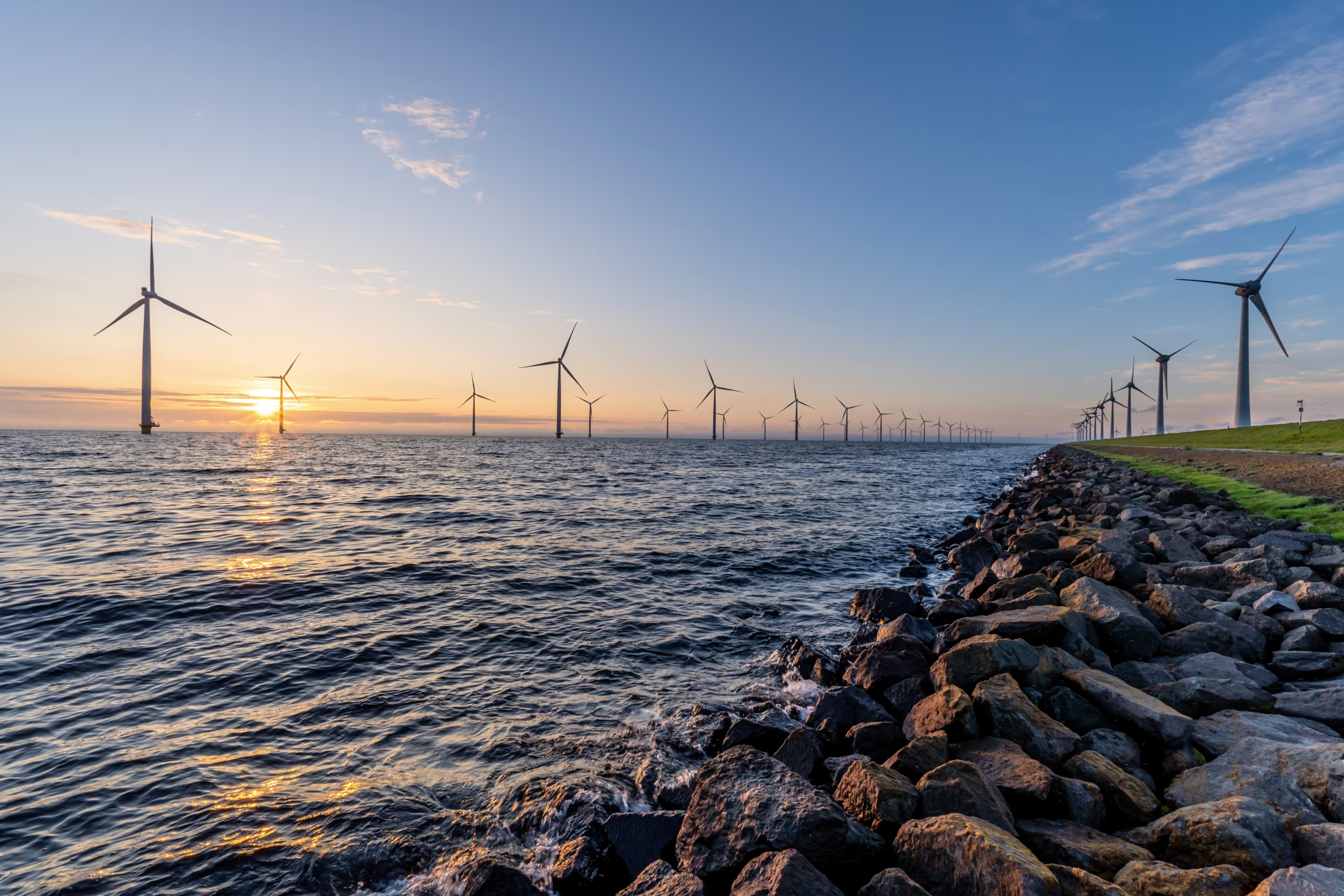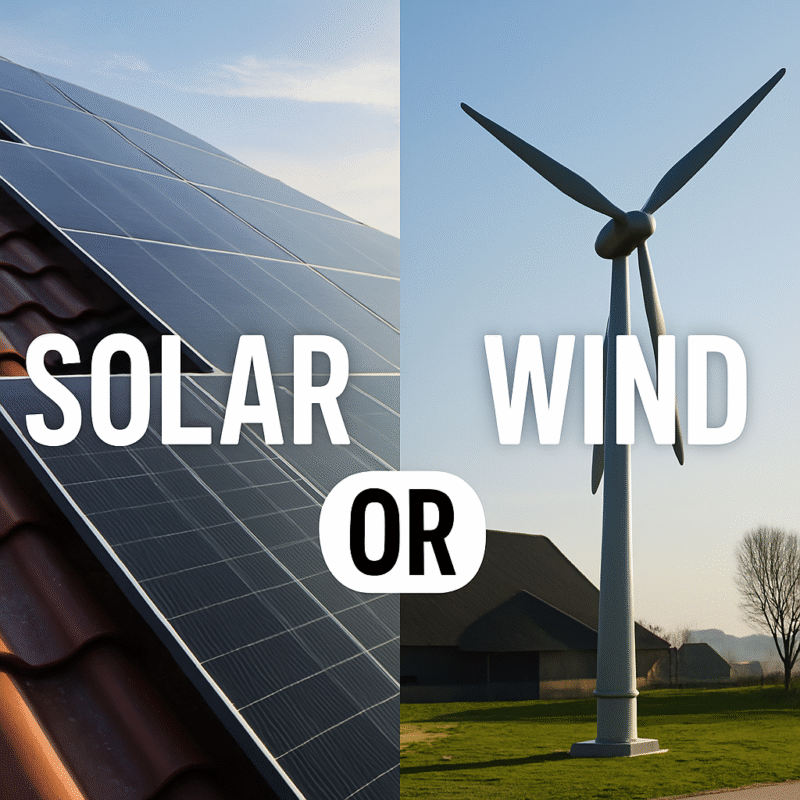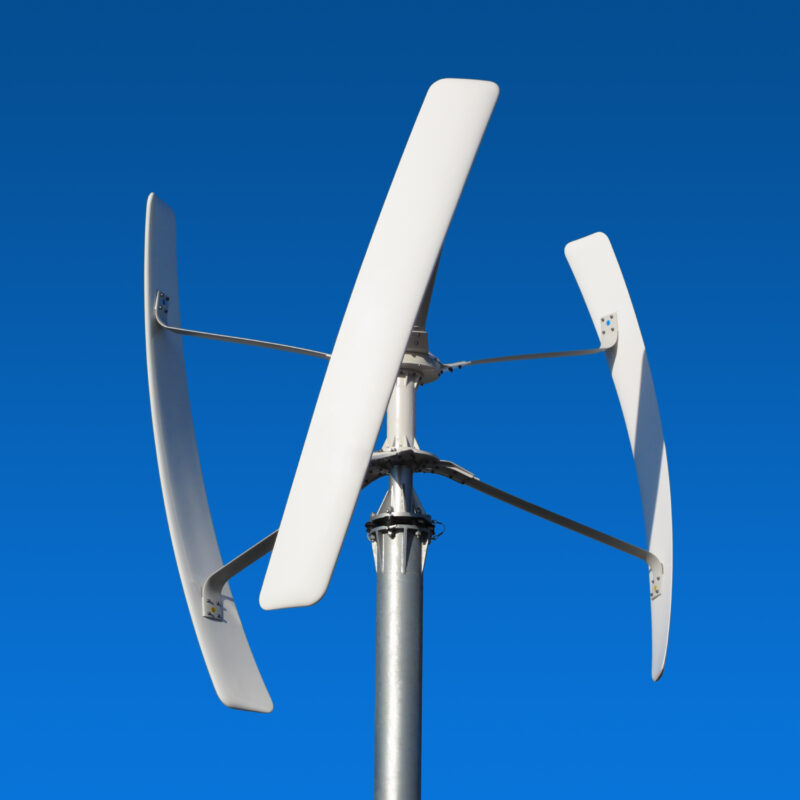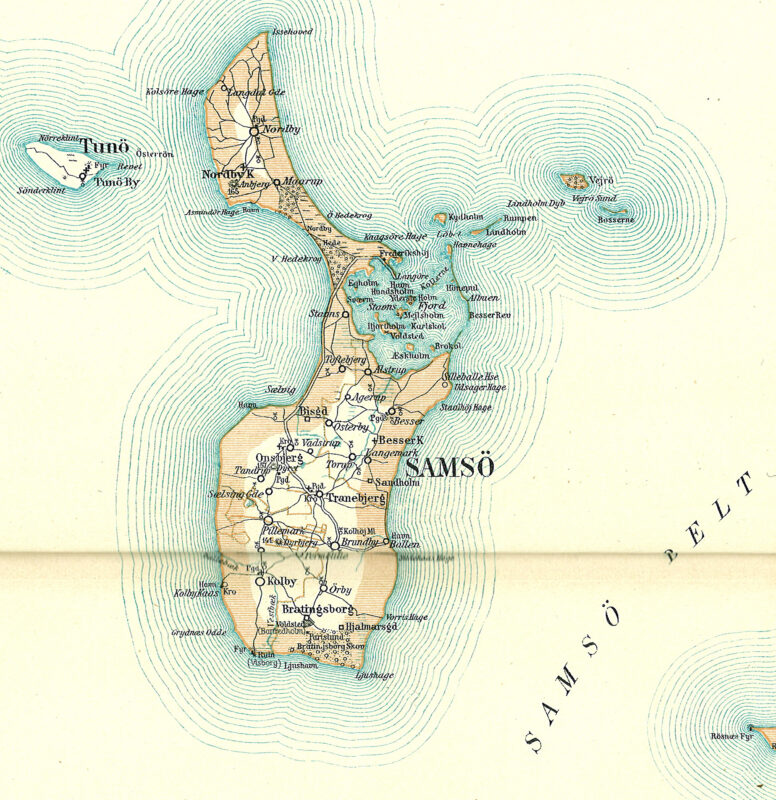Wind energy stands out as one of the quickest ways to generate green power. Power companies use two main approaches: onshore and offshore installations.
Onshore Wind Energy
Electricity generation through land-based turbines defines onshore wind energy. These turbines operate in rural areas that offer higher wind speeds with minimal obstacles. The technology has evolved remarkably since 1887. Professor James Blyth’s small turbine generated electricity in Scotland, but commercial wind power truly began in 1991. In UK only there are now more than 2,600 onshore wind projects. Their combined capacity reaches beyond 15GW. Modern installations feature turbines that average 98 meters in height with 50-meter blade lengths. Today’s onshore turbines deliver power capacity between 2.5 to 3 MW.
Offshore Wind Energy
Ocean winds power offshore energy installations. These setups benefit from stronger and steadier wind speeds without land features getting in the way. How tall are these turbines? Offshore turbines tower over their land-based cousins at 190 meters tall. The cost to build and maintain offshore wind farms runs high, yet they reshape the renewable energy scene. The UK’s Hornsea 2 leads the world as the largest offshore wind farm. Its 165 turbines generate 1,320 MW – enough power for 1.4 million homes.
Both types serve vital roles in global energy transition, though their scale, efficiency, and economics differ. The last decade tells an impressive story. Global offshore wind turbine capacity jumped 97% from 2010 to 2021. These turbines’ rotor diameter continues to surpass that of onshore installations.
Comparing wind energy to other renewable energy sources, its innovation and progress is growing amazingly fast.
What Is Onshore Wind Energy?
Wind turbines on land capture moving air’s kinetic energy and turn it into electricity. This renewable power source works through a simple mechanism – wind spins large turbine blades that rotate a generator to produce electrical power.
Wind turbines on land come in two main types:
-
- Three-bladed horizontal-axis turbines that face the wind’s direction
- Various styles of vertical-axis turbines, including “eggbeater” designs that work regardless of wind direction
These turbines need wind speeds between 11 km/h and 90 km/h to work well. They reach peak efficiency at 30 km/h and generate maximum power at 44 km/h. The generated electricity goes through a transformer that boosts the voltage before connecting to the electrical grid.
A typical wind farm spreads multiple turbines across a large area. Each turbine has specially designed blades that can spin in winds as slow as 11 kilometers per hour. The blades connect to a hub with shafts, and a gearbox speeds up the rotation before sending it to the generator.
Wind power on land grows faster than most renewable technologies. Land-based wind projects are easier to build and cost less to maintain than offshore ones. These wind farms work well with other renewables like solar panels. Combined wind-solar plants added 2.6 gigawatts of wind capacity in 2022.
What Is Offshore Wind Energy?
Offshore wind energy makes use of winds that blow over bodies of water, mainly seas and oceans, to generate electricity. The installations at sea benefit from higher and more consistent wind speeds because physical barriers are absent, which allows more efficient power generation.
China (49%), the United Kingdom (22%), and Germany (13%) dominate the global offshore wind sector with over 75% of worldwide installations. The total global capacity reached 64.3 gigawatts by 2022. The UK’s Hornsea Project Two, which generates 1.4 GW, stands as the world’s largest offshore wind farm.
These marine installations come in two main forms:
-
- Fixed-foundation turbines secured to the seabed in relatively shallow waters (less than 60m deep)
- Floating wind turbines for deeper waters, still in earlier development phases
The electricity generation process starts when wind rotates the turbine blades. This motion travels through a drive shaft to magnets inside wire coils and creates electrical current. The power moves through undersea cables to offshore substations where the voltage increases for efficient mainland grid transmission.
Advantages of offshore wind farms compared to those onshore are:
-
- Double the energy potential because of stronger, more consistent marine winds
- Minimal visual and acoustic effects on populated areas
- Larger turbine sizes and wind farm areas are possible
The technology became price-competitive with conventional power sources in 2017, despite higher original costs. This development makes offshore wind increasingly important to the global clean energy transition.
Onshore vs Offshore Wind Energy: Key Differences
Onshore and offshore wind energy differ in many ways beyond just where we place them.
The size difference stands out first. Offshore turbines reach heights of 260 meters with 150-meter blades. These giants are 3.5 times bigger than their onshore cousins. How much energy do these turbines produce? This means offshore turbines generate 8-12 MW each, while onshore models produce 2.5-3 MW.
The harsh marine environment shapes what materials we use. Offshore turbines need special corrosion-resistant steel. Onshore turbines work fine with standard steel mixed with fiberglass resin, iron, copper, and aluminum.
Money tells an interesting story too. Onshore wind farms cost less to build, and small wind turbines even less so. Offshore projects need complex infrastructure which drives up costs, though new technology is helping close this gap.
The numbers show offshore wind farms perform better. They run at 38% capacity compared to onshore’s 24%. This happens because ocean winds blow stronger and more steadily without any obstacles in the way.
Security concerns favor onshore development since underwater cables could be targets for sabotage. On top of that, local communities can get involved with onshore projects, like small wind turbines, while offshore ventures need big corporate money.
Both types of wind turbines are growing faster than ever. By 2050, experts predict onshore capacity will hit 5044 GW, while offshore should reach about 1000 GW.
Advantages and Disadvantages
Wind energy systems come in two main types – onshore and offshore. Each type brings unique advantages and faces different challenges that shape how well they work.
Land-based wind farms shine when it comes to budget-friendly solutions. They cost nowhere near as much as their ocean-based counterparts. These systems need just months to build and easily connect to existing power grids. The carbon footprint stays low at about 9 gCO2/KWh, which beats gas (450 gCO2/KWh) and coal plants (1,050 gCO2/KWh) by a wide margin.
Ocean-based wind farms take advantage of better wind conditions. Wind speed makes a big difference in power output. A turbine gets twice the energy from 15-mph winds compared to 12-mph winds. These ocean installations use bigger turbines in stronger, more consistent winds and often produce double the energy of their land-based cousins.
Each type faces its own set of challenges. People often resist large land-based projects because of how they look and the need for fossil fuel backup when winds are low. Ocean projects deal with complex construction issues, especially in deep waters over 200 feet, and cost much more to build and maintain.
The environmental impact varies between the two types. These wind farms affect wildlife in different ways. Research shows some species struggle while others benefit from new artificial reefs that form around the structures.
Comparison Table: Onshore vs Offshore
A significant gap exists between wind energy types, as shown by global capacity figures. Onshore capacity has reached 1,053 GW while offshore capacity stands at 79.4 GW as of 2024. This complete comparison expresses the fundamental differences between these renewable energy approaches:
| Characteristic | Onshore Wind | Offshore Wind |
| Turbine Height | ~98 meters | ~190 meters (up to 260 meters) |
| Blade Length | ~50 meters | Up to 150 meters |
| Turbine Capacity | 2.5-3 MW | 8-12 MW |
| Capacity Factor | 24% | 38% |
| Construction Timeline | 3 years 8 months | 7-11 years |
| Cost per MW | $3.13 million | $4.49 million |
| LCOE (2023) | $0.033/kWh | $0.075/kWh |
| Required Materials | Standard steel, fiberglass resin | High tensile corrosion-resistant steel |
| Wind Speed Requirements | 7-56 mph (optimal at 18 mph) | Higher and steadier wind speeds |
| Key Advantages | – Reduced capital costs
– Faster installation – Lower maintenance needs – Simple grid connection |
– Steadier, stronger winds
– Twice the energy output – Less visual and noise disruption – Enhanced turbine capacity |
| Key Challenges | – Community concerns about appearance
– Variable power generation – Limited land availability |
– Complex construction needs
– Costly maintenance – Advanced infrastructure requirements – Cable vulnerability undersea |
Offshore installations provide more consistent power with higher efficiency ratings but need higher investment. Denmark leads the European region with the lowest offshore wind LCOE at $0.053/kWh. Both technologies will play a crucial role in the future, as wind energy is expected to provide 35% of global electricity production by 2050.






